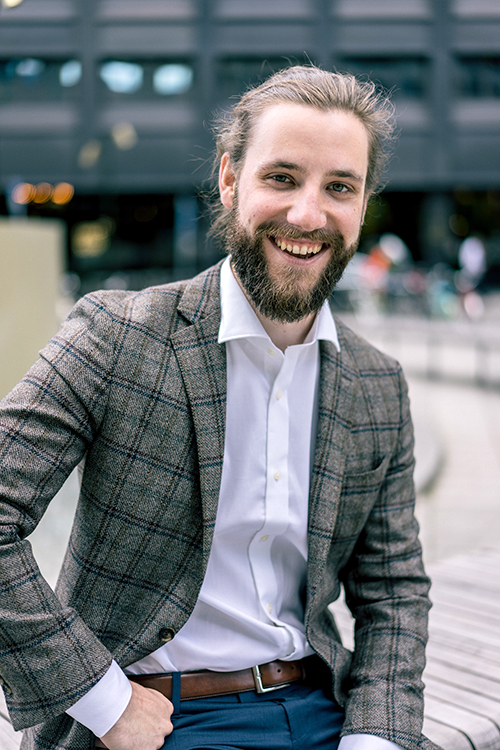Szymon followed up his master’s with PhD studies at KTH
Szymon Sollami Delekta graduated from the master’s programme in Nanotechnology in 2015. He is now finalising his PhD in Electronics at KTH.

Hi Szymon, what are you doing now?
After finishing my master’s in Nanotechnology at KTH, I decided to remain in Stockholm for a while. I was mainly looking for a position in research but I was then offered a PhD position at the Department of Electronics at KTH. Now I’ve been working here for around four years and I’m actually preparing for my defence, which will happen next week.
What is a regular day like at your job?
My PhD project is about printing micro-supercapacitors (similar to micro-batteries) based on graphene. The great thing about the project is that I get to take part in all the development stages of these devices – formulating new materials, fabrication, characterization and finally data analysis and benchmarking. Because I work in all these areas, I don’t really have a typical day at my job and what I end up doing generally depends on where my research is taking me. Sometimes I’ll end up spending all day in the lab (usually when things are not working); other times I just write codes in order to make the outputs of the tools I use more understandable. As a PhD student, I also spend a large amount of my time writing manuscripts, addressing peer-review comments or attending conferences at which I show my work to the outside world.
Why did you choose the master’s programme in Nanotechnology?
I chose Nanotechnology because it is an all-around and cross-disciplinary programme, teaching everything about working at the nanoscale. The great thing about the programme is the plenitude of eligible courses that students can choose from. This means they can can choose the study path that best suits their interests: from solid-state physics and analysis methods to semiconductor and MEMS nanofabrication or bionanotechnology.
And why did you do your PhD in Electronics?
Because it’s the project that got me hooked since the beginning. The problem of efficiently storing energy in small and light electrochemical devices is only going to grow more critical in the future. When batteries start being used basically everywhere – in the Internet of Things, the automotive industry and in smart homes as part of smart grid distribution – we will need to identify new active materials that can yield high energy and power densities, and do so while also being easy to recycle.
What was the best aspect of your studies at KTH?
My favourite aspect of my master’s studies was the internationality of the programme and that we were taught everything from a practical perspective. For example, during my studies we got to use scanning electron microscopes, synthesize nanoparticles and visit the clean room (a high-tech research facility) to fabricate MEMS and semiconductor devices.
KTH also gave me the opportunity to carry out part of my studies abroad, thanks to the many universities with which KTH collaborates.
What are your plans for the future?
I think it’s about time for me to leave my comfort zone (research and academia) and find a job in industry. Luckily, my research is very practical and I have developed my skills in various areas: chemistry, electronics, data analytics and project management. I will soon start looking for positions related to these fields. Wish me luck!
